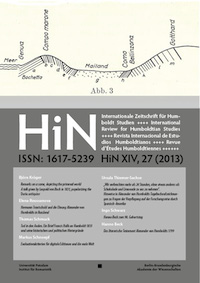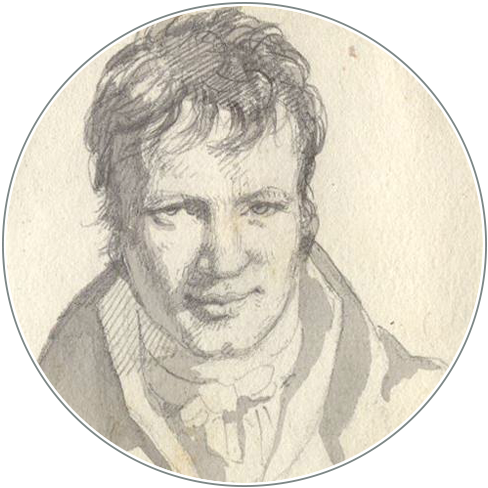Remarks on a scene, depicting the primeval world. A talk given by Leopold von Buch in 1831, popularizing the <i>Duria antiquior</i>
DOI :
https://doi.org/10.18443/179Mots-clés :
1830, Berlin, Duria Antiquior, Erdgeschichte, Geologie, Henry De La Beche, Leopold von Buch, Naturgeschichte, Transmutation, Vortrag, ZeitgenossenRésumé
Résumé
Le géologue prussien Leopold von Buch a noué une longue amitié avec Alexander von Humboldt, il a grandement influencé les idées dans le domaine de la géologie. Dans une conférence donnée en 1831 à Berlin et dont le texte est publié ici pour la première fois, von Buch a présenté le Duria antiquior du géologue anglais Henry de la Beche. Cette oeuvre est très largement considérée comme la plus ancienne représentation d‘une scène de vie préhistorique. Elle a contribué à initier de nombreuses réflexions à propos des processus de changement géohistorique. L‘exposé de 1831 à Berlin permet de mettre en évidence que von Buch était un scientifique influencé par le romantisme. Ses descriptions des transformations organismiques géohistoriques s‘appuient sur des exemples figurés dans la littérature classique. Son exposé illustre également combien l‘influence des géologues anglais sur les reconstitutions géohistoriques était forte alors en Allemagne.
Zusammenfassung
Der Geologe Leopold von Buch war lebenslanger Freund Alexander von Humboldts und hatte wesentlichen Anteil an dessen Verständnis erdgeschichtlicher Prozesse. In einem hier erstmals veröffentlichten Vortrag, gehalten 1831 in Berlin, stellt von Buch die 1830 publizierte Duria antiquior des englischen Geologen Henry De La Beche vor. Das Bild gilt als erste wissenschaftliche Rekonstruktion einer vorzeitlichen Welt und warf mit seinem Erscheinen neue Fragen zu den Prozessen erdgeschichtlicher Veränderungen auf. Leopold von Buch zeigt sich in dem Vortrag als Forscher der Romantik, der mit der Duria antiquior vorhandene bildhafte Vorstellungen organismischer Transformation aus der Literatur aufgriff, um geohistorische Veränderungen der Lebewesen zu beschreiben. Mit dem Vortrag wird der große Einfluss deutlich, den die Engländer auf die zeitgenössischen Erzählungen der Erdgeschichte in Deutschland hatten.
Abstract
The Prussian geologist Leopold von Buch was a lifelong friend of Alexander von Humboldt and had a significant influence on Humboldt’s geological ideas. In a talk, held in Berlin in 1831, which is published here for the first time, von Buch presented the Duria antiquior of 1830 by the English geologist Henry De La Beche. The Duria antiquior is widely regarded as the earliest depiction of a scene of prehistoric life from deep time. The print raised new questions about the processes of geohistorical change. The talk reveals that Leopold von Buch was a true scientist of the Romantic Age. His descriptions of geohistorical organismic transformations are taken from pictorial examples of organismic transformation from the classical literature. The talk also illustrates how influential English geologists were for geo-historical reconstructions in Germany.
Téléchargements
Comment citer
Numéro
Rubrique
Licence
(c) Tous droits réservés Björn Kröger 2013

Ce travail est disponible sous licence Creative Commons Attribution - Pas d’Utilisation Commerciale 4.0 International.
Les droits des articles envoyés restent la propriété de leurs auteurs et sont publiées sous la licence Creative Commons-Lizenz (CC BY-NC 4.0). Tous les auteurs publiant dans le HiN doivent accepter ce modèle de licence.
Les auteurs doivent eux-mêmes s’occuper de l’obtention des droits d’auteur pour les images utilisées.
Les divers éléments de la mise en page et du design de la revue sont protégés et ne peuvent être récupérés et réutilisés dans d’autres publications sans autorisation préalable de la part de HiN.










